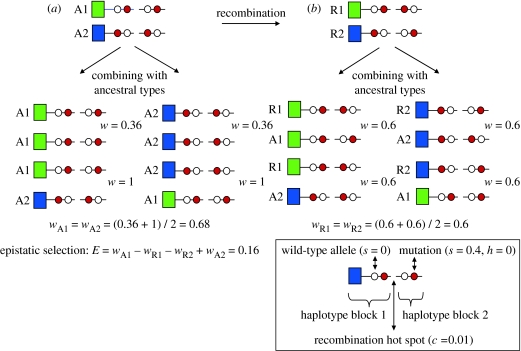Figure 2.
Epistatic selection (E) against the recombinant haplotypes can prevent the breakdown of LD by recombination between haploblocks. In this example, there are two haploblocks separated by a recombination hot spot with a recombination rate (c=0.01). Each haplotype block contains a genetic load unique to the block (red circles), consisting of a completely recessive deleterious mutation (s=0.4, h=0). The immune genes (squares) have no fitness effect. The fitness effects of mutations are multiplicative across loci. The fitness of individuals homozygous for both blocks equals w=(1−0.4)2=0.36. Completely heterozygous individuals have a fitness of w=1. Recombinant haplotypes have a fitness equal to w=(1−0.4)=0.6, because they always carry one mutant in homozygous condition. This assumes that recombinants are rare and combine with ancestral haplotypes only. The strength of epistatic selection is given by the fitness difference between the (a) ancestral and (b) recombinant haplotypes (E=1−0.6−0.6+0.36=0.16) (see Crow & Kimura 1970).

